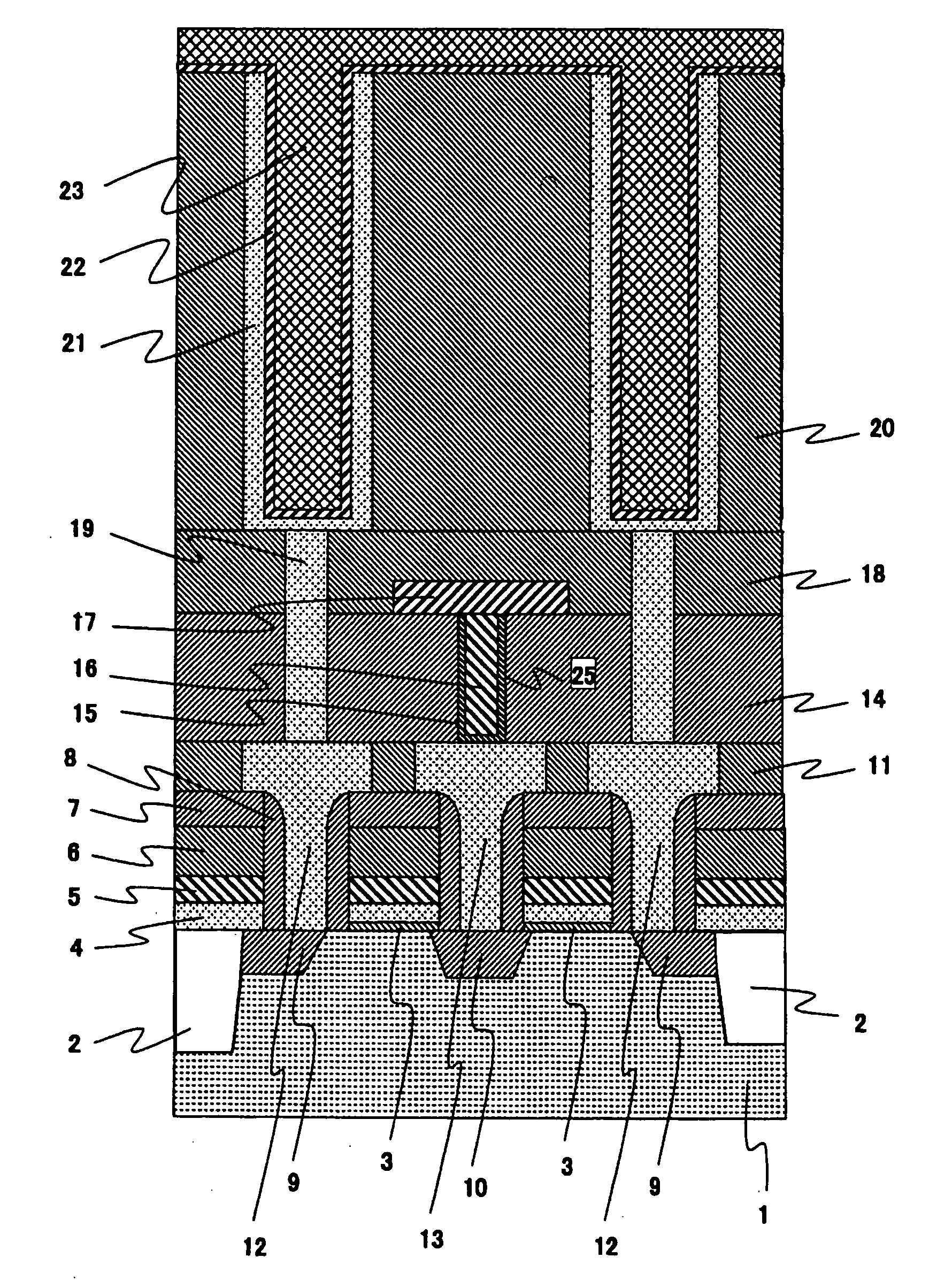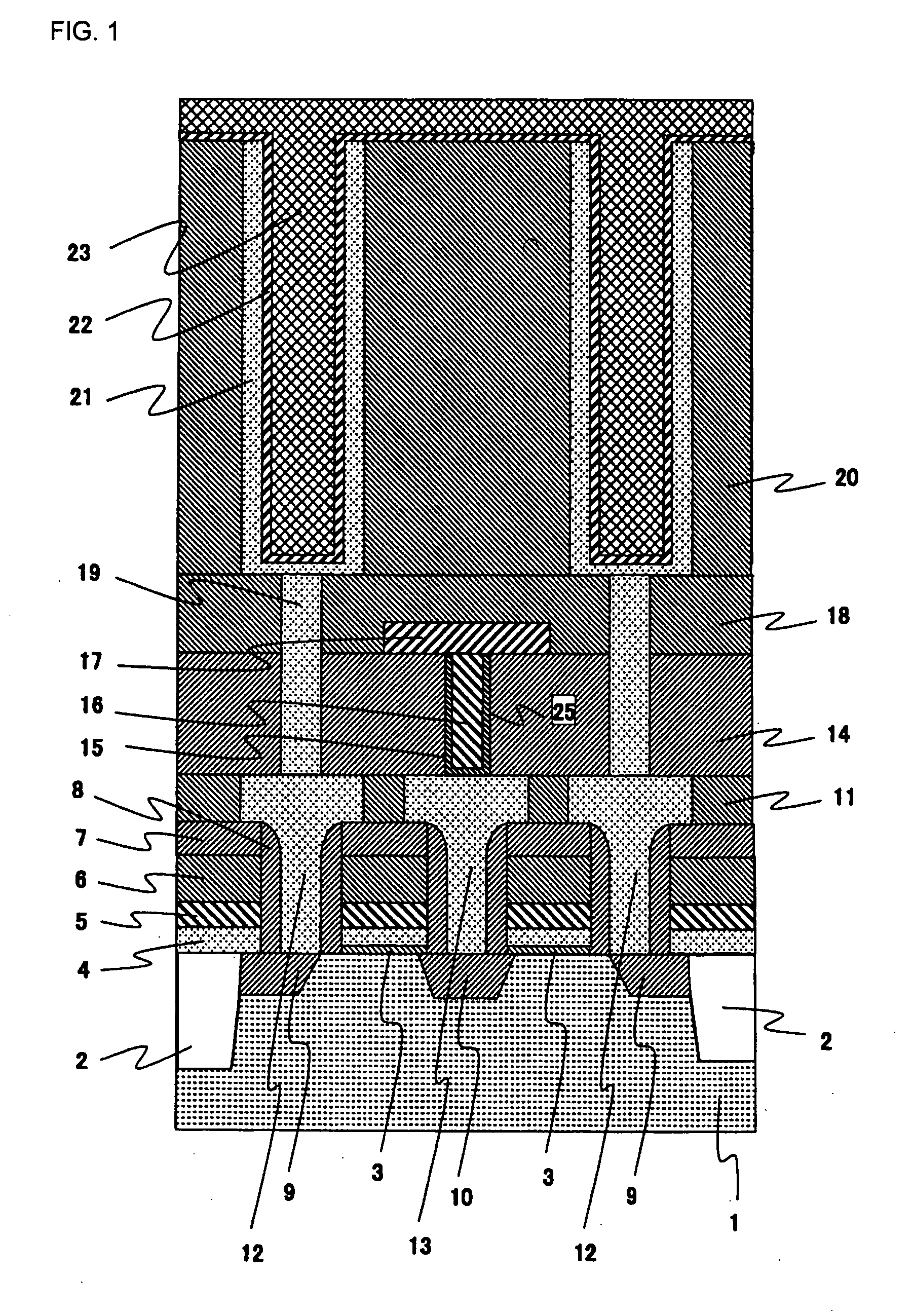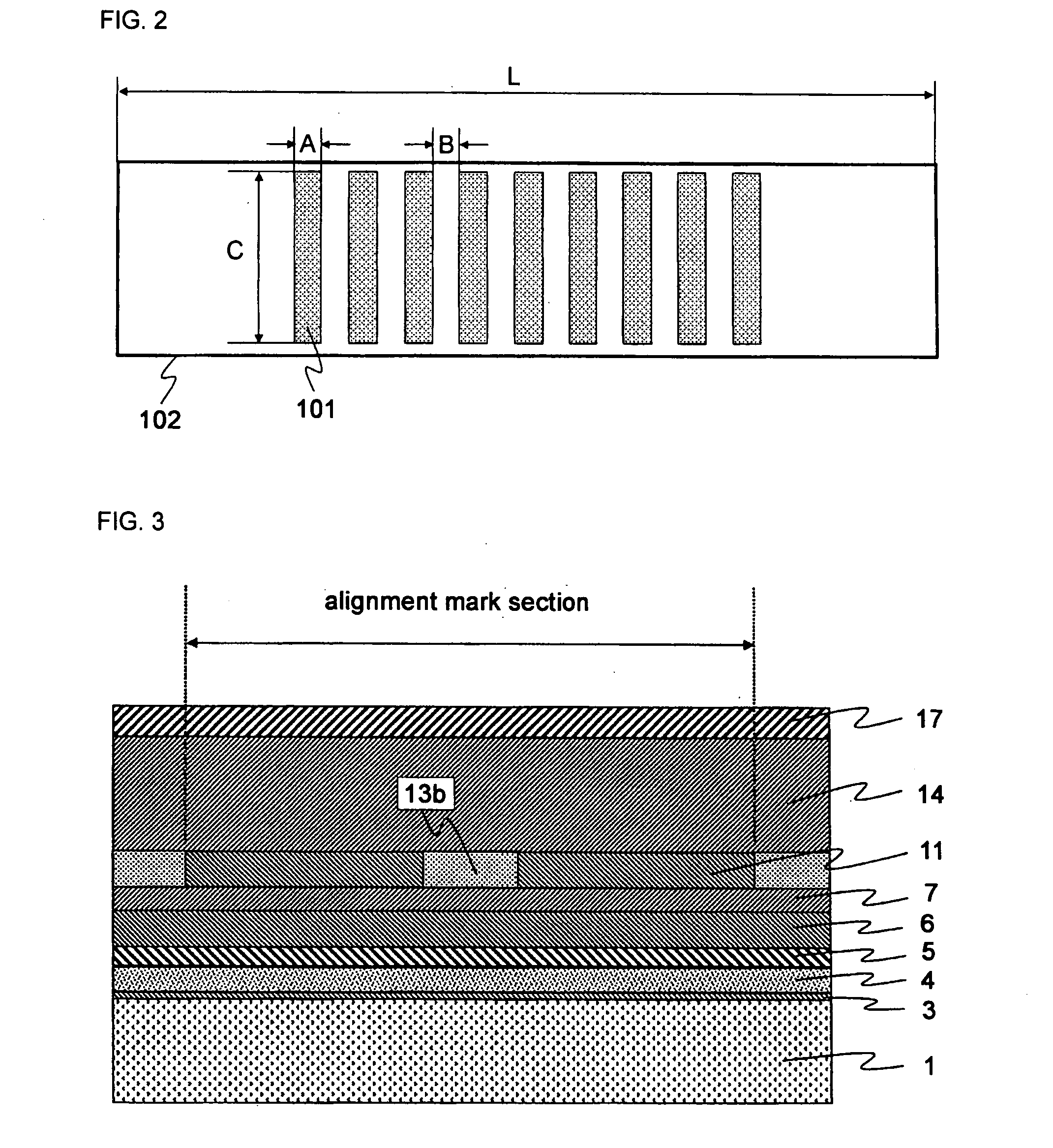Method of manufacturing semiconductor device
a manufacturing method and semiconductor technology, applied in semiconductor devices, photomechanical treatment, instruments, etc., can solve problems such as misalignment of pattern, difficulty in detection of alignment marks placed under bit line layers, and circuits not being fabricated as designed
- Summary
- Abstract
- Description
- Claims
- Application Information
AI Technical Summary
Benefits of technology
Problems solved by technology
Method used
Image
Examples
example
[0043]Firstly, as shown in the memory cell section of FIG. 4A, an element isolation region 2 was formed by a well-known method in prescribed region of a surface of a semiconductor substrate 1 which was made of p-type single-crystal silicon, and then a gate insulating film 3 with a thickness of 4 nm was formed by a thermal oxidation method on the surface of the semiconductor substrate. After that, a first silicon film 4 was grown by a well-known CVD (Chemical Vapor Deposition) method with monosilane (SiH4) being used as a source gas. The thickness of the first silicon film 4 was set to be 70 nm. Next, a metal film 5 was grown to a thickness of 90 nm by a well-known sputtering method, and, further, a silicon nitride film 6 were grown to a thickness of 120 nm by a well-known plasma CVD method with monosilane and ammonia (NH4) being used as source gases, and a silicon oxide film 7 were grown to a thickness of 80 nm by a well-known plasma CVD method with monosilane and dinitrogen monoxid...
PUM
 Login to View More
Login to View More Abstract
Description
Claims
Application Information
 Login to View More
Login to View More - R&D
- Intellectual Property
- Life Sciences
- Materials
- Tech Scout
- Unparalleled Data Quality
- Higher Quality Content
- 60% Fewer Hallucinations
Browse by: Latest US Patents, China's latest patents, Technical Efficacy Thesaurus, Application Domain, Technology Topic, Popular Technical Reports.
© 2025 PatSnap. All rights reserved.Legal|Privacy policy|Modern Slavery Act Transparency Statement|Sitemap|About US| Contact US: help@patsnap.com



